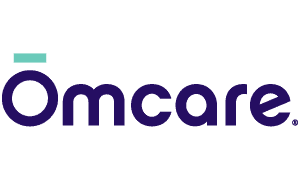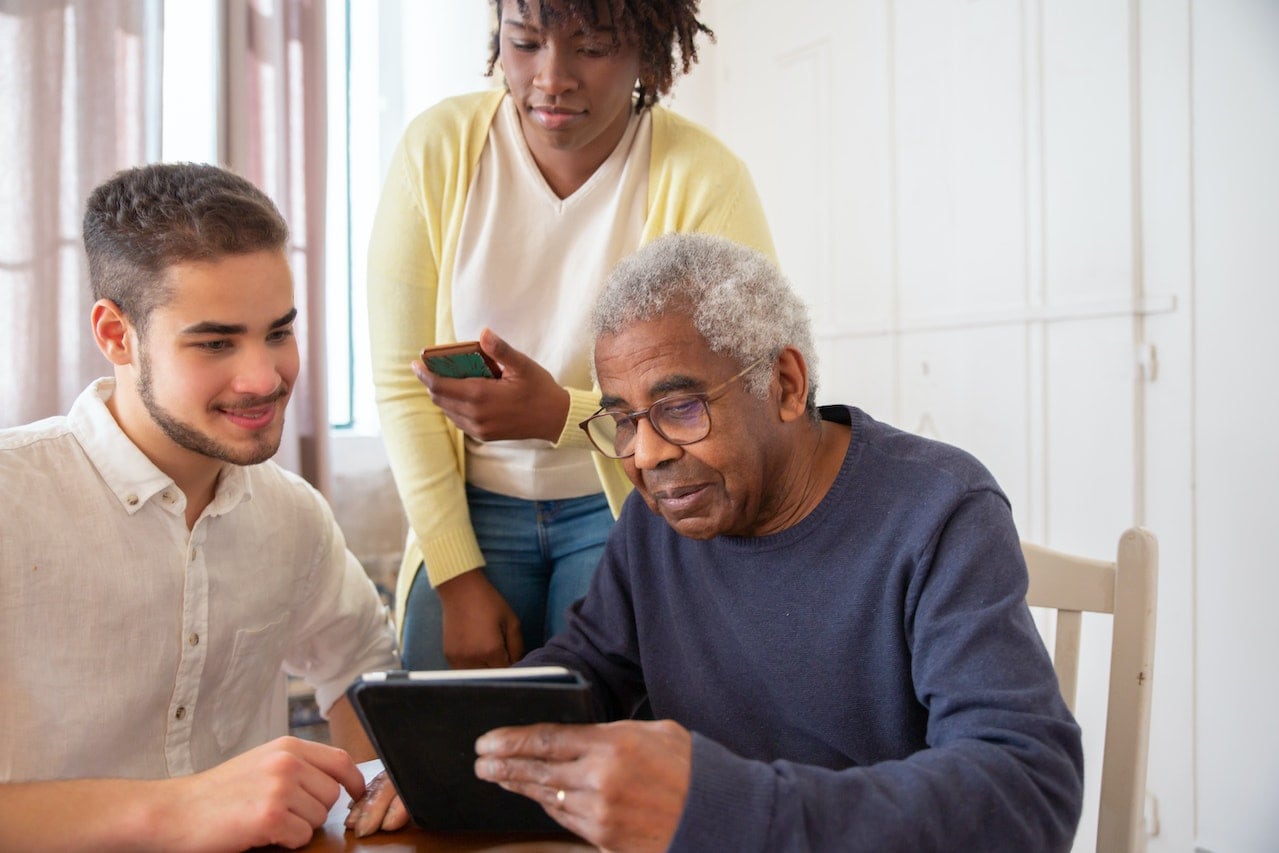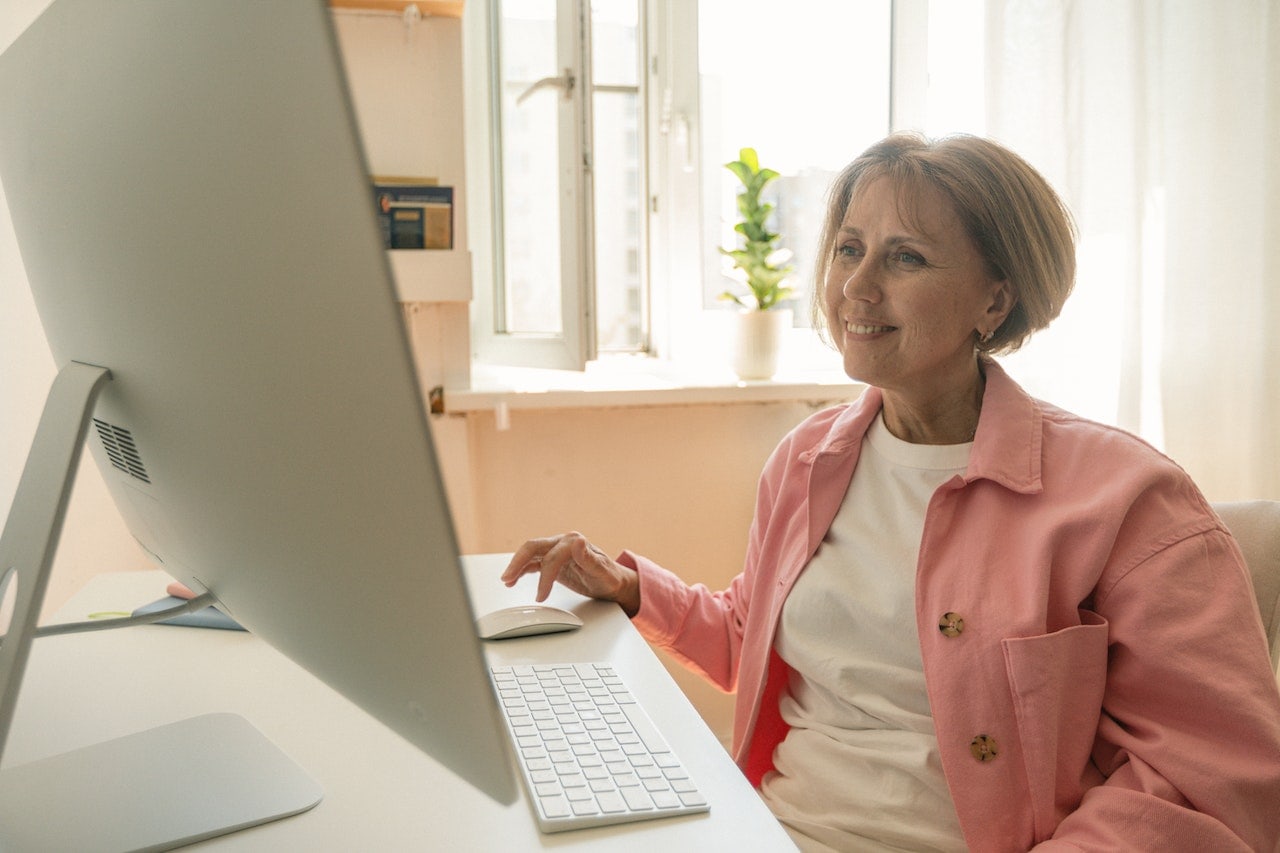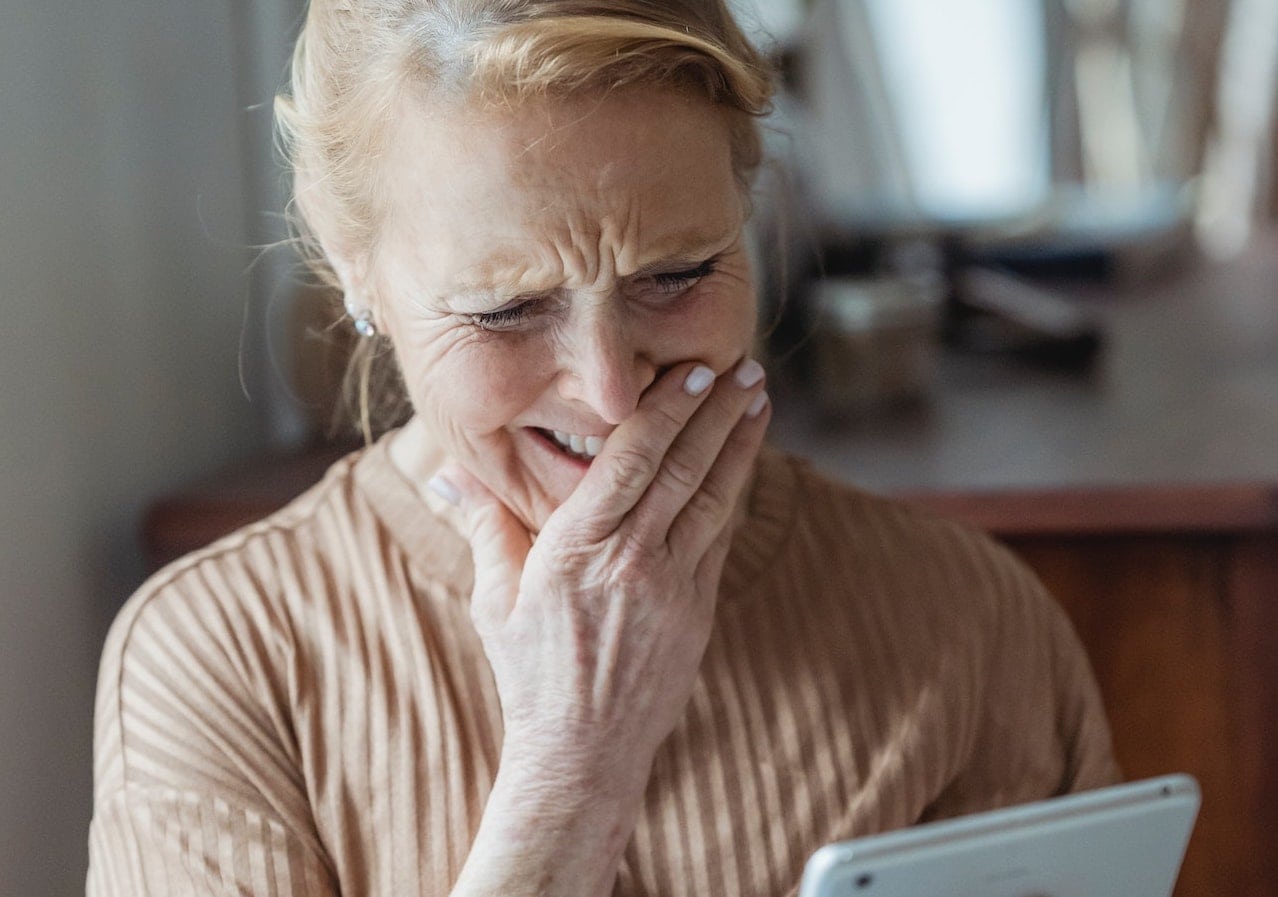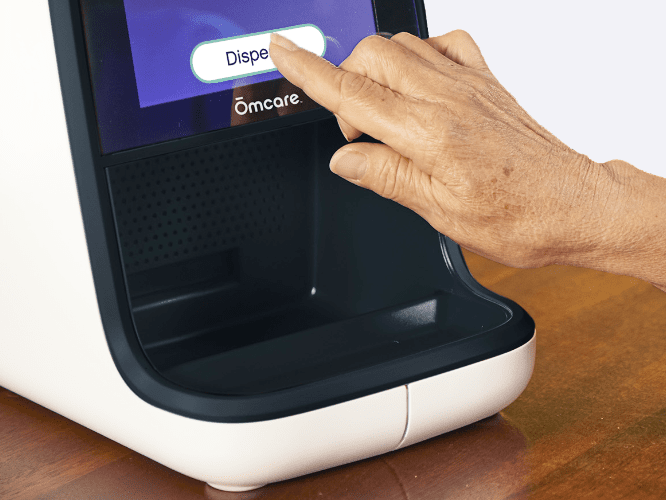Medicare Advantage vs. Original Medicare: What's the difference?
October 31, 2022Medicare AdvantageBlog
Making decisions that impact your physical and financial well-being can be confusing. Should you pick Medicare Advantage, or Original Medicare? What’s the difference? Here’s a comparison of your two options.
What is Medicare?
To dive into the differences between Medicare plans, we have to understand Medicare as a whole: it is federally-funded healthcare insurance. Medicare plans are much more cost-effective compared to private insurance plans.
Most people who sign up for Medicare are 65 or older, but it also assists younger people with certain disabilities and anyone with End-Stage Renal Disease. No matter why you qualify for Medicare, you have the choice between Medicare Advantage and Original Medicare.
Medicare Advantage vs. Original Medicare
Coverage
When we say coverage, we mean “What will the Medicare plan pay for?”
Prescription Drugs
Medicare Advantage often covers prescription drugs. However, only certain plans cover medications—if you need prescription drugs covered, make sure to pick a plan with Part D coverage. Each plan will cover different drugs.
With Original Medicare, you’ll either have to purchase separate coverage for drugs or pay for them out-of-pocket.
Medicare Advantage offers extra coverage
Medicare Advantage covers more medical services—like dental care, vision, and hearing—that Original Medicare doesn’t. Both Advantage and Original usually cover medically necessary services or supplies.
Medicare Advantage requires approval
With Medicare Advantage, you often need approval of services or supplies before the plan covers it. In contrast, with Original Medicare, you usually don’t have to get any sort of approval ahead of time.
Costs
When considering coverage, cost is a very important part of the equation. First, we need to understand a few insurance terms:
- Premium: The amount you’ll pay for your health insurance per month.
- Deductible: A specified amount of money that you agree to pay before your insurance pays.
- Coinsurance: The amount you pay for covered health care after you meet your deductible.
AARP writes, “The federal government sets the premiums, deductibles, and coinsurance amounts for Part A (hospitalizations) and Part B (physician and outpatient services).”
Original Medicare
Most people qualify for premium-free Part A—meaning your hospitalizations are covered with no monthly fee. As for Part B, you pay a premium for that.
As for out-of-pocket costs, you usually pay 20% of the Medicare-approved amount after your deductible. Before you meet your deductible, you cover all the costs yourself. There’s no cap on out-of-pocket costs.
Many people who enroll in Original Medicare enroll in Medigap policy too, which helps cover the costs of:
- Copayments
- Coinsurance
- Deductibles
Aside from Medigap, you can pay for these costs using coverage from a former employer or union, or Medicaid.
Medicare Advantage
Similarly to Original Medicare, most people qualify for premium-free Part A. As for Part B, you pay a monthly premium. Plus, it’s possible you’ll have to pay a separate premium to the plan. Premium costs vary greatly depending on what plan you pick.
Out-of-pocket costs also vary by plan, but there is a yearly limit on out-of-pocket costs for Part A and B. Once you reach your plan’s limit, you won’t have to pay anymore for the rest of the year.
As for Medigap, you can’t buy it and you don’t need it when with a Medicare Advantage plan.
Breakdown of costs
At the end of the day, costs depend on your individual plan. Many seniors do feel more comfortable with a Medicare Advantage plan, because there’s a yearly limit on costs, plus more coverage in general.
After costs, there’s still one more factor to consider.
Freedom of choice: Doctors and hospitals
The last question to ask yourself is, “Can I choose my doctor and provider?”
Original Medicare offers more freedom. You can go to any doctor or hospital that takes Medicare, and you usually won’t need a referral to see a specialist.
Medicare Advantage has more limitations. Typically, you can only use doctors who are in the plan’s network and service area. If you want to see a specialist, you often will need a referral.
Quick Summary
We’ve thrown a lot of information at you, so here is a quick summary of it all:
- Coverage: Medicare Advantage offers more coverage.
- Cost: Original Medicare may be less expensive if you have minimal healthcare needs, but Medicare Advantage offers a yearly cap on out-of-pocket expenses.
- Choice: Original Medicare offers more freedom of choice in doctors and hospitals.
Ōmcare engages with Medicare plans
Ōmcare partners with organizations that are seeking to:
- Increase access
- Improve health outcomes
- Reduce costs
Ōmcare is actively engaging with Medicare plans—both traditional and Advantage—to help bring technology into the home as part of the costs you already pay. Learn more about how we partner.
Choosing a Medicare Advantage Plan: What you need to know
October 14, 2022Medicare AdvantageBlog
If you’re a senior looking for affordable healthcare, you’ve probably heard of (and may already be using) Medicare. It’s federally-funded health insurance, designed to get you the care you need at a lower cost.
When you sign up for Medicare, you have two options: Original Medicare or Medicare Advantage. We’re focusing on Medicare Advantage because it has extra benefits that Original Medicare doesn’t—including coverage for vision, hearing, dental services, and prescription drug coverage.
What does Medicare Advantage cover?
Medicare Advantage usually covers all three Medicare Parts:
- Medicare Part A: Covering hospitalizations. You usually won’t pay a premium for this, however, it’s possible you won’t qualify for premium-free Part A. If so, you can buy it.
- Medicare Part B: Covers medical insurance (non-emergency). Every Medicare Advantage enrollee pays a monthly premium for Part B.
- Medicare Part D: Covers prescription drug coverage. You pay for Part D coverage, and you’ll have extra out-of-pocket costs throughout the year. Only some Medicare Advantage plans offer this coverage.
We’ve covered the basics of Medicare Advantage, but you have more choices to make when it comes to choosing a plan. It can get confusing, which is why we’ll walk you through what to consider before making your decision.
What to consider when choosing coverage
Here are five factors to consider when choosing a Medicare Advantage plan:
Five factors to consider
- Costs: How much are the premiums, deductibles, out-of-pocket costs, and yearly caps?
- Coverage: How well does the plan cover your needs?
- Prescription drugs: Medicare Part D covers prescription drugs, but plans vary with costs of certain medications and which ones are covered.
- Doctor and hospital choice: You’ll only be able to visit doctors and hospitals that are within the plan’s network.
- Quality of care: Each Medicare Advantage Plan receives a star rating, so you can see how high its quality of care is before you enroll. Compare your options based on this factor using an online tool.
While you’re considering these factors, we highly recommend documenting your needs. This will help you remember what you need while you’re picking a plan.
Types of Medicare Advantage Plans
There are different types of plans. Here are the most common types of Medicare Advantage Plans:
Health Maintenance Organization (HMO)
An HMO generally limits coverage to care from doctors, hospitals, and providers who are within their network. HMOs typically have lower monthly premiums, but more limitations when it comes to which doctors they cover. With an HMO, prescription costs aren’t usually covered.
Preferred Provider Organization (PPO)
Similarly to an HMO, PPO plans have a network of doctors and healthcare providers that are cheaper to use. You can use other providers, but they’re more expensive. You’ll have more flexibility than your typical HMO plan, and unlike HMOs, prescription drugs are usually covered.
Private Fee-for-Service (PFFS)
Some PFFS plans work with any provider, while others have a network of specific doctors. Often, you can go outside of that network for a higher cost. This plan determines how much it will pay, versus how much you must pay when you get care. Prescription drugs aren’t always covered under an PFFS.
Special Needs Plans (SNPs)
According to Medicare, “SNPs limit membership to people with specific diseases or characteristics. Medicare SNPs tailor their benefits, provider choices, and drug formularies to best meet the specific needs of the groups they serve.” The chronic or disabling conditions these plans tailor to include: diabetes, HIV/AIDS, and dementia.
Care will typically be provided by specialists that cover your condition.
Joining a Medicare Advantage Plan
Once you decide what plan is best for you, all that’s left to do is enroll. You can enroll when you turn 65 or during open enrollment (every year from October 15 – December 7). You’ll also be able to switch plans one time from January 1 – March 31 each year.
When you’re ready to sign up, Medicare has created a resource to help you through the process.
Ōmcare engages with Medicare plans
Ōmcare’s goals are to help increase access to senior patients while reducing costs. Yet at the same time, we seek to improve health outcomes. We actively engage with Medicare plans to help bring cost-effective healthcare technology into your home as part of the price you already pay.
Learn more about how we partner.
Ōmcare Achieves Dose-Level Medication Adherence and Creates New Revenue Model for Senior Care
October 10, 2022PressPress Releases,News
In partnership with Ecumen and Thrifty White Pharmacy, Ōmcare successfully completed a pilot of its first product, the Ōmcare Home Health Hub® proving a new model for additional revenue and dose-level adherence.
[Minneapolis, October 11, 2022]. Ōmcare successfully wrapped their initial pilot in partnership with Ecumen and Thrifty White Pharmacy to test its first product—The Ōmcare Home Health Hub.
The Hub is an all-in-one home telehealth solution that enables remote care and ensures dose-level medication adherence. It stores up to a 30-day supply of multi-dose pouched medication that works in tandem with a video portal, providing visual confirmation that loved ones are taking the right medication at the right time.
Thrifty White Pharmacy provided home-delivered pharmacy fulfillment service for each participant in easy-to-load packaged medications. Then, over the course of the 3-month pilot, participants—who took at least 4 medications a day—received calls to their Hub from an Ecumen staff member when it was time to take their medications.
The pilot aimed to measure three key measurements:
- Evaluate medication adherence among participants
- Examine patient and caregiver satisfaction
- Compare operational and cost between remote medication assistance via the Ōmcare Home Health Hub and the traditional med door pass
“This innovation sparked our interest because we saw it as a way to help older adults live independently longer,” said Shelley Kendrick, president and CEO of Ecumen, a nonprofit provider, developer and operator of living spaces and services for older adults. “As we seek to find ways to serve people wherever they call home, medication management solutions like this are key.”
Overall, the pilot successfully demonstrated improvements in all three areas. With 780 calls, lasting an average of three minutes, the results showed:
- The participants had 98% dose-level adherence
- The medication assistance service via the Hub is 85% more efficient than door med pass
- 100% of the participants strongly agree Ōmcare helps them remember to take their medications
- 100% of the participants agree that they're more likely to take their meds using Ōmcare.
“We are grateful to Ecumen and Thrifty White Pharmacy for their commitment and stellar performance in our pilot,” said Lisa Lavin, Chief Executive Officer. “Both organizations continue to innovate to improve health, reduce cost, and elevate the patient and provider experience.”
Ōmcare is scaling up for an early 2023 commercialization and is actively seeking senior care partners who wish to expand their services via technology.
View the full report: Omcare Home Health Hub® Pilot Outcomes Report
Benefits of home care for seniors and how age-tech can help
September 29, 2022Age TechBlog
Before advancements in technology, seniors had no choice but to age in a care facility. Now, it’s no longer the only option. In fact, many seniors prefer not to go into a senior care facility, and would rather stay in their own homes. 87% of older Americans want to age in place, and age-tech can empower them to do so.
What is age-tech?
Age-tech is technology specifically created for seniors. Seniors living at home, or “aging in place,” rely on healthcare technology to decrease the amount of in-person care they need.
53% of older Americans would prefer a mix of medical staff and healthcare technology to manage their medical needs. The healthcare age-tech that can help seniors age in place includes:
- Medication adherence: These devices help seniors accurately take their medication, in the right dose, at the right time. It includes automatic pill dispensers, medication reminders, and adherence monitoring.
- Remote patient monitoring: These devices track the vitals of patients, helping their healthcare providers manage their chronic conditions.
- Emergency alert systems: If a senior is in a medical emergency—for example, if they have a heart attack—emergency alert systems can notify healthcare providers, sending help without the patient even calling 911.
- Telehealth: Remote messaging systems, video chats, and calls with providers allow seniors to receive medical care in the comfort of their own home.
Although only 8% of seniors currently have a health and safety device, 70% of seniors made a tech purchase in the past year. Seniors keep reaching for their devices, and AARP says they’re ready for more. There is great potential for seniors to be using healthcare technology to age in place, and home care can help seniors live a higher-quality life.
Benefits of senior home care with age-tech
Retain their independence
Seniors have spent their entire lives building a home they love, working for themselves, and making choices. When they move into a senior care facility, it can feel like their autonomy has been stripped away from them. They no longer feel that same sense of independence they’ve had throughout their entire life.
“Many seniors know they need help,” says Mary Sue Patchett, Vice President of Brookdale Senior Living. “But they don’t want to ask for it because they’re afraid of losing their independence.”
To help seniors retain their independence, home care is key. It allows seniors to live their lives in their own homes, and technology allows them to experience their time without a stay-at-home caregiver constantly looming over their shoulder.
Far less expensive
Another aspect of independence is financial independence. Unfortunately, 65% of adults said they aren’t saving money to pay for senior living, and senior care facility costs aren’t affordable. The average monthly cost for a semi-private room in a senior care facility is $7,900. Similarly, full-time at-home care is also extremely expensive, with a median of $4,500 per month.
Along with pricey assisted living and caregiving prices, healthcare expenses are also on the rise. Costs for inpatient care have risen by 195% over the last 20 years, while prices for outpatient services grew by 200%.
Assisted living facilities, in-home caregiving services, and healthcare are all extremely expensive, and seniors only have a finite amount of retirement savings. However, age-tech can lower the cost. By using age-tech, seniors require less in-person care, without a reduction in quality.
Overall less fear
When seniors can’t afford to hire help, caregivers in the family usually have to step up to assist them. Family members of seniors spend an average of 24 hours a week providing unpaid care, and this increases when there’s no extra help. In fact, many caregivers need to reduce their hours or quit their jobs to help care for their elderly loved ones.
Unfortunately, seniors aren’t blind to the impact of their need for care. In fact, Pachett says another reason seniors don’t ask for help is because they’re afraid of “becoming a burden to their children.” She continues, “Instead, they suffer silently and often in isolation.”
Since age-tech reduces the amount of in-person care seniors need, it can help them feel like less of a burden. This increases the likelihood that they’ll seek care for any medical ailments they’re facing, without worrying about the impact it’ll have on their loved ones.
Delivering high-quality care with age-tech
Age-tech helps seniors maintain their independence, save on finances, and drop the fear that they’re a burden. Most importantly, age-tech provides high-quality care that drives positive health outcomes.
If you’re looking for a healthcare solution for seniors, look no further than the Ōmcare Home Health Hub®. It was specifically designed for elderly patients to help them age in place by providing:
- Medication deliveries: We’ll deliver medication directly to your doorstep.
- Pre-packaged medicine: Up to 30 days of medication comes in easy-to-open pouches, and it is programmed to dispense on time, in exactly the right amount.
- Medication reminders: You’ll get reminders when it’s time to take medication.
- Regular check-ins: You can regularly check in with healthcare providers via video chat, calls, or text messaging.
- Cost effectiveness: After a one-time fee, the Ōmcare Home Health Hub® is only $9.99 per month.
Reach out to Ōmcare today to learn more.
Employee Spotlight: Lexie Wiek
September 19, 2022Employee SpotlightBlog
Name: Lexie Wiek
Title: Customer Care Specialist
Education: I went to the University of Wisconsin – Platteville and received a Bachelor's Degree in both Forensic Science and Biology with a minor in Criminal Justice
Time at Ōmcare: 10 months
1. What led you to Ōmcare?
I started with Ōmcare by working part time over winter break doing Customer Care. When I was done with school I started to help by testing the Ōmcare Home Health Hub. Last November I was offered a full time job as the Customer Care Specialist.
2. What’s the most rewarding part of working at Ōmcare?
The most rewarding part of my job at Ōmcare is helping our Lead Users become more adherent with their medications because they can really see a difference personally with their health and wellness.
3. What is your favorite current project you’re working on?
My favorite project is working on the Lead User Pilot because I love getting to know our Lead Users and I love helping them find solutions that they are proud of.
4. Pick out a core value that means a lot to you. How have you seen this lived out in your time at Ōmcare?
WE are a Team; I love collaborating with different members of our team and learning new perspectives that could help solve a problem or make our product even better!
5. What are you most proud of accomplishing throughout your time at Ōmcare?
I am most proud of the help that we have given to the participants and lead users that we have helped become more adherent leading to them feeling better physically, mentally, and emotionally.
6. Why should someone work at Ōmcare?
I believe that someone should work for Ōmcare because we are working towards having an amazing product that will truly change people's quality of life and will have a huge impact on the longevity of their lives.
Transitioning to virtual healthcare for senior care facilities: Your ultimate guide
September 6, 2022Age Tech,Senior CareBlog
Since January 2020, 400,000 senior care facility staff have quit, but the mass exodus of caregivers started long before then. "We know that even before the pandemic, two years ago, there were already staff shortages," says Susan Reinhard, senior vice president at AARP. "It's a perennial problem."
Senior care facility staff are leaving the industry due to a number of reasons, including low pay. However, Laurie Brewer, the New Jersey Long-Term Care Ombudsman, says "Sometimes money is not the problem. It's working conditions that are the problem." These conditions include taxing physical and emotional demands, especially as they have watched 200,000 of their residents and colleagues die of COVID-19.
As senior care facilities continue to face staffing shortages, healthcare technology can step in to provide relief to already-exhausted caregivers. Technology delivers high-quality care with less manpower, and seniors actually prefer this blended approach. 53% of elderly patients say they would prefer their healthcare needs to be met by a mix of staff and technology.
Transitioning to virtual healthcare isn’t simple, but this guide for senior care facilities breaks the process down into clear, actionable steps.
Transitioning to virtual healthcare
Step 1: Know what problems virtual healthcare can solve
When transitioning to virtual healthcare, be aware of the limitations. While healthcare technology can ease the burden of a lot of tasks, some will still have to be handled by your staff. For example, you’ll still need staff to change bedding, clean residents, and shift patients to avoid bed sores.
Although virtual healthcare isn’t appropriate in every situation, virtual healthcare can handle tasks including:
- Monitoring chronic conditions, such as cancer, diabetes, and heart disease
- Improving medication adherence with automatic pill dispensers
- Interactive patient care (IPC) which connects patients with doctors virtually, via calls, messaging systems, or video chats
- Remote vital monitoring that can alert senior care facility staff when there are issues
Technology also allows residents to connect with providers virtually, which means no traveling to and from the appointments.
Now that you know when virtual healthcare can be leveraged to assist senior care facility staff, it’s vital to pick the right technology.
Step 2: Picking the right technology for your facility
When you’re thinking about looking for the right healthcare technology, there are a lot of options to consider. As you do your research, focus on:
Simple implementation
Technology should make your staff’s jobs easier, not harder. Look for solutions that are easy to implement, and prioritize companies that assist with implementation. Getting the platform up and running into your senior care facility should be relatively easy.
Integration
Another thing to look for is integration of all your needs. It complicates matters if you have to turn to one platform to monitor chronic conditions, and another to improve medication adherence. One interface should allow you to manage all your healthcare needs.
Easy-to-use
Look for a user-friendly, intuitive design. Especially for senior patients, who can often feel uncomfortable using new technologies due to the digital divide, ease of use is key. If some of your elderly residents are still struggling, your staff may need to train them in how to use it.
Data analytics
Without tracking data, it can feel like going through a maze in the dark. When you track analytics, you’ll know what to improve going forward. There are healthcare technologies that automatically collect the data for you, and these are often the best for your senior care facility.
Step 3: After making a choice, train your staff
When your residents have questions or difficulties using healthcare technology, they will turn to your staff for answers. Your staff should be trained and knowledgeable about the technology you implement.
Your staff should also be able to handle basic troubleshooting if issues arise. Another way to set your transition up for success is to find a healthcare app that offers ongoing tech support.
As you’re training your staff, you can pick a few staff members to be on your “super user” team. These team members will know more about the technology than an average staff member, and they can train their peers and offer relief in the face of any issues.
Step 4: Create documentation
Creating documentation of how to use healthcare technology and the workflow that staff should follow helps you quickly train new staff members as time goes on. Even staff who have already undergone training can quickly and easily access your documentation to answer any questions they may have.
Documentation can also help you develop a roadmap of how to implement the new healthcare technology. For example, you can outline:
- Who will be responsible to explaining the technology to residents
- Who will obtain informed consent
- Who is responsible for introducing providers to patients
- Who will document the needs during the appointment (for example, a medical scribe)
- Who will coordinate follow-up appointments
- How data will be integrated into your existing systems
When you have all the steps and processes written down, it’s easier for your staff to implement the healthcare technology and continue to use it properly.
Step 5: Engage with the residents and their families
The whole process of transitioning to virtual healthcare is for the benefit of your residents. Engage with the residents and their families to figure out any concerns and how to address them, and keep them engaged throughout the process. Similarly to how you’ll train your staff, we also recommend training your residents to allow for easier integration.
After you implement your new healthcare technology, continue engaging with residents and their families by asking for feedback. Use their responses to help you make it easier on your residents and for new residents. After all, your residents are your primary concern.
Ōmcare offers a new standard for care coordination
As caregivers are diminishing, telehealth solutions allow senior care facilities to deliver quality patient care in a unique way. The Ōmcare Home Health Hub® allows you to:
- Coordinate: Connect your residents with healthcare providers via live chat. Efficient communication is possible with an interactive interface.
- Improve medication adherence: Automatically and accurately dispenses pre-slit packages of multi-dose medication at the right time.
- Inform: Dispensing data and video observation allow your staff to be aware of when doses are missed or taken incorrectly. Your staff will receive visual confirmation of the right medicine, at the right time, with the right person.
- Effectively manage costs: We’ve focused on creating a customizable, cost-effective solution for your senior care facility that won’t break the bank.
Ōmcare’s Home Health Hub® makes transitioning to virtual healthcare easy and keeps your patients healthier. Connect with Ōmcare today to learn more.
Improve medication adherence: Healthcare best practices for Medicare Advantage
August 22, 2022Medicare AdvantageBlog
Medication non-adherence is when medication is not taken as prescribed. Especially in patients with a chronic condition, medication non-adherence leads to bad health outcomes and even causes 125,000 preventable deaths every year.
Medication non-adherence is also an expensive issue. It leads to $100 billion in preventable medical costs every year. Plus, patients who aren’t taking their medicine properly are 25% more likely to be hospitalized—adding more stress to an already overburdened hospital staff.
All of this begs the question: How can we improve medication adherence? We’ll dive into the details.
What is medication adherence?
Medication adherence is the ultimate goal. It’s when a patient takes 80% or more of their prescribed medication doses, leading to positive health outcomes and proper management of chronic diseases.
Currently, only 50% of U.S. adults take their medication properly. This is important especially for Medicare Advantage plans, because 41% of the Medicare Star Ratings is influenced by proper prescription management and medication adherence. Specifically, medication adherence for oral diabetes medications, cholesterol, and hypertension are triple-weighted in a plan’s Star Rating.
When a plan is rated higher, more people enroll in it. 90% of Medicare beneficiaries are enrolled in a plan with a 4.0 rating or above, which means improving your Star Rating should be your first priority to increase enrollees.
Here is how to improve medication adherence to help increase your Star Rating:
How to increase medication adherence
1. Understand the reasons for non-adherence
In order to improve medication adherence, it’s important to understand the reasons why patients aren’t following their medication schedules. Here they are:
- Forgetfulness: 63% of medication non-adherence cases are because patients forgot. This is especially a problem for patients with dementia or Alzheimer's.
- Cost: 1.1 million Medicare patients are expected to die over the next decade due to prescription costs. Even when a patient has great health insurance, their medication might cost too much, so they stop taking them.
- Adverse side effects: Many medications cause adverse side effects, such as extreme nausea, so patients stop taking their medication altogether. Unfortunately, not taking the medication provides temporary relief, but it causes more issues down the road.
- Trouble managing multiple medications: Many patients have multiple medications–-all with different refills, prescription schedules, and dosages. It becomes too challenging to manage so many medications.
- Lack of health literacy: 36% of adults have low health literacy, which means they don’t understand health and medicine. These patients can’t make educated decisions about their bodies and often leads to a lack of understanding for what they’re supposed to do.
- Mental illness: Between 40 - 60% of patients who are mentally ill don’t adhere well to their medication schedules. Mental illness is a huge risk factor when it comes to non-adherence.
Knowing the reasons why patients aren’t properly taking their medication allows you to proactively take steps to improve adherence. Ask personalized questions to get a sense of what’s causing the patient to skip medication, and address the reasons head-on.
2. Simplify communication and education
The average Medicare beneficiary reads at a 5th grade level, which is a problem because most healthcare communications are written at a 10th grade level or higher. Medicare patients need simple, easy-to-read language to help them improve their medication adherence.
Cut out the medical jargon and focus on clearly communicating the treatment plan in everyday language. Explain in common terms what could happen to the patient if they don’t adhere to their medication plan.
Another way to simplify communication is by making it possible for patients to reach providers via phone, portal, or video chat. Not every single question warrants an in-person visit, and making providers accessible saves time. It also drives better medication adherence.
3. Make treatment plans easy to follow
Medication plans should be explained well, and they should be easy for the patient to follow. A patient can’t follow a treatment plan they don’t understand. There should be no surprises for the patient when it comes to how much they need, when they should take their medication, and where they need to pick it up.
One way to do this is: Print the patient’s medication plan and provide them with a copy. When listening to a diagnosis and medication plan in the office, patients can feel overwhelmed, causing them to forget what you said. Printing out the plan in easy-to-follow steps makes it simpler for patients.
Another way to keep plans simple is by sending text or call reminders. They might understand their plan, but forget to follow it in their daily lives. Since forgetfulness causes the majority of medication non-adherence cases, sometimes it’s as simple as sending a reminder text.
4. Use automatic pill delivery and dispensers
Patients often forget to take their medication or order refills. In the Express Scripts medication non-adherence study, 20% of patients did not renew their prescriptions on time, and 10% put off refilling their prescriptions. Automatic pill deliveries can combat this issue. Patients don’t even have to leave their homes—medication gets delivered right to their doorsteps.
Beyond forgetfulness, another common reason for medication non-adherence is that patients find it challenging to manage too many prescriptions. It gets complicated to sort out all the medication, their refills and doses, and when they need to be taken. One way to overcome this issue is to use automatic dispensers that deliver the right dose of each medication.
Medicare Advantage Plans: Rely on Ōmcare
Automatic pill deliveries, dispensers, reminders, and easy accessibility to providers make medication adherence much simpler for many patients. This helps Medicare Advantage plans reach the Star Ratings they need.
Ōmcare streamlines and simplifies the entire medication management process:
- Medication is delivered to your patient’s doorstep.
- Prepackaged medication is dispensed to patients in the right amount, at the right time.
- Daily (or multiple times a day) check-ins connect patients with caregivers so they can ensure medication adherence on a dose level.
Ōmcare’s Home Health Hub® keeps your patients on track for positive healthcare outcomes. Reach out to Ōmcare today to learn more!
Chuck Mooty, Minnesota Business Hall of Fame Inductee, Joins Ōmcare Board of Directors
August 8, 2022PressPress Releases,News
Esteemed business leader, Chuck Mooty, joins the Board of Directors for innovative home health technology.
[Minneapolis, August 8, 2022].
Ōmcare announced that Chuck Mooty has joined their Board of Directors. Recently, Mooty was announced as a 2022 Minnesota Business Hall of Fame inductee for his many successes and thoughtful leadership throughout his career.
Within a six-year window, Mooty was the CEO and Chairman of four major Minnesota organizations. He led the rejuvenation of the Dairy Queen system, re-opened and rebranded the Faribault Woolen Mill, stewarded Fairview Health Services during a period of crisis and completely reinvigorated Jostens Inc.
Clearly, Mooty has a track record of helping companies thrive.
“Chuck is renowned for possessing the strategic insight and business acumen to parachute into any business and fashion a strategy for growth and optimization. As Ōmcare prepares for its commercial rollout of the Ōmcare Home Health Hub®, Chuck’s experience and laser-focused mindset will be instrumental for our national growth strategy,” said Lisa Lavin, Ōmcare CEO.
Mooty is enthusiastic to join a group of innovators who make home the site of care.
“I am truly excited to join Lisa and the entire Board of Ōmcare at this pivotal time of bringing innovative technology for medical care into the home” said Mooty. “As our world continues to age and our healthcare workforce continues to decline, technology must be able to meet this challenge and I believe that Ōmcare is perfectly positioned to lead in the innovative care delivery with safe and accurate medications within the home.”
Ōmcare aims to bring care into the home by extending the reach of caregivers and improve medication adherence and outcomes through its Ōmcare Home Health Hub®, which gives caregivers of all types – from physicians and pharmacists to home care providers or family members – the ability to provide remote care and confirm compliance with medication treatment plans from anywhere.
Ōmcare is currently wrapping up a successful pilot with Ecumen Senior Care and Thrifty White Pharmacy and will move into full commercialization later this year.
The importance of connection: Why social messaging systems elevate healthcare platforms
High blood pressure. Obesity. Heart disease. Anxiety. Depression. A weak immune system. Cognitive decline. Alzheimer's disease… Even death.
Those are the conditions that affect lonely seniors at higher rates than those who have meaningful relationships.
Dr. Steve Cole, Ph.D. says, “Loneliness acts as a fertilizer for other diseases.” He continues, “The biology of loneliness can accelerate the buildup of plaque in arteries, help cancer cells grow and spread, and promote inflammation in the brain leading to Alzheimer’s disease.”
The statistics: How loneliness affects elderly patients
If you’re the type of person who likes to see the numbers, we get it—so are we. Here are the statistics from the Center for Diseases Control and Prevention (CDC). Loneliness in elderly patients is associated with increases the risk of:
- Dementia by 50%
- Heart disease by 29%
- Stroke by 32%
- Hospitalization by 68%
- Emergency visits by 57%
And the most shocking statistic: loneliness increases the risk of death by four times.
Overall, the CDC says that the health effects of loneliness rival those of smoking, obesity, and physical inactivity. It’s known as the “loneliness epidemic.” Lisa Marsh Ryerson, president of the AARP Foundation, says, “This is a very real public health crisis.”
Connection is essential to keep seniors healthy—both mentally and physically.
What is loneliness?
Chances are: most of us have felt lonely before. Emphasis on felt. Because that’s exactly what it is: a feeling. The CDC explains that loneliness is the feeling of being alone.
Loneliness and social isolation are not one and the same. A person could be surrounded by people, yet still, feel alone. Another person could be socially isolated, yet not feel lonely.
"Loneliness is the discrepancy between what you want from your relationships and what you actually have,” says Stephanie Cacioppo, director of the University of Chicago Pritzker School of Medicine’s Brain Dynamics Laboratory.
The goal is to help seniors avoid the distressing feeling of loneliness—even if they’re physically alone.
A deep dive into elderly loneliness
When it comes to experiencing loneliness, seniors are the most at-risk members of society.
The CDC notes, “Older adults are at increased risk for loneliness and social isolation, because they are more likely to face factors such as living alone, the loss of family or friends, chronic illness, and hearing loss.” Here are some more risk factors for loneliness in elderly patients:
- Retirement
- Loss of mobility
- Lack of transportation
40% of Medicare enrollees feel more lonely since November 2020. The COVID-19 pandemic has exacerbated the isolation epidemic.
Does technology build connections?
50% of older, educated Americans say the internet has been essential in helping them adjust during the pandemic. But it’s not as simple as just connecting seniors to the internet.
“The solution is not just to say we are going to give everyone an iPad,” says Laura Trejo, general manager of the Los Angeles Department of Aging. “What are they going to do with it?” Instead, here are some of the best ways to use technology to combat elderly loneliness:
- Engaging online courses
- Virtual senior fitness classes
- Online community services
- Zoom or phone calls
- Classes to teach seniors how to use technology
- And finally…healthcare technology is an amazing area to help seniors ward off loneliness.
Healthcare interventions are key
Loneliness leads to health problems, but the opposite is also true: health problems lead to loneliness. For example, 1 in 3 seniors have hearing loss, which leads to them feeling lonely.
Another risk factor for loneliness is having a chronic illness. Psychology Today writes, “Symptoms and treatment often require withdrawal from the world.”
Due to the interconnectedness of health conditions and loneliness, healthcare interventions are key. Medical professionals can help patients manage the underlying health problem that’s causing loneliness. Ultimately, this intervention will lead to less health issues down the line.
What we’re saying is: Healthcare interventions are extremely important to help seniors ward off loneliness.
The American Society on Aging writes, “Loneliness and isolation should be assessed and treated in the same way as other issues concerning health—through screening and appropriate intervention.” Here are how healthcare interventions can help lonely seniors:
- Periodic assessments for loneliness
- Inform seniors of the adverse health effects of loneliness
- Make efforts to connect seniors with social care
- Determine and treat the underlying health issues that are causing loneliness
- Recommend therapy
And finally, take the time to build a relationship with your patients.
Be a friend to your patients
Another way healthcare professionals can help is by fostering a connection with elderly patients. In fact, you might be one of the only relationships your patient has left. Taking a few extra minutes to show empathy can make all the difference in your patient’s life.
When you’re communicating via a healthcare platform—for example, video chatting or messaging—you’ll want to be more verbal. During in-office visits, patients can read your body language. That’s not true when you’re providing healthcare virtually. Here are our tips for being a virtual “friend” to your patients:
- Let your patients know you’re listening.
- Be curious about your patient. Ask questions to understand your patient—including questions that aren’t necessarily about medicine.
- Acknowledge the patient and their feelings.
- Show support.
- Share extra resources.
- Treat the patient how you would want a family member to be treated.
- Ask for feedback.
Even if you’re communicating virtually, showing empathy leads to better health outcomes for patients.
Social messaging elevates healthcare platforms
Connection is key to helping seniors avoid long-term health problems and needless suffering. That’s why we built a healthcare app that allows patients and providers to build meaningful relationships. And the Ōmcare Home Health Hub® was born. It’s a customizable telehealth portal.
Here are a few things you can do with Ōmcare:
- Connect with patients in real-time via video or chat
- Provide face-to-face care
- Help patients feel less lonely and manage their conditions
- Provide medication management (prescribe medications, provide accurate pre-slit packages of multi-dose medication at the right time, and track adherence)
Reach out to Ōmcare today to learn more.
Do elderly patients want to use healthcare technology?
As we’re considering alternatives to at-home healthcare for elderly patients, medical technology is what we turn to. Age-tech is not only more cost-effective, but it also allows older patients to maintain their autonomy and independence as they age.
But when it comes to older patients, there’s a stigma that they don’t want to—or can’t—use technology. These are the questions we’re investigating today: Do older patients want to use healthcare technology? What barriers make healthcare technology challenging for the older generation, and how can we overcome them?
Most elderly patients are using technology in their daily lives
Younger generations have grown up with technology, which makes it less complicated to pick up and learn quickly. But what about older generations who haven’t had the benefit of learning how to use technology from a young age?
Although we typically imagine elderly patients struggling to use technology, 61% of people 65 and older own a smartphone. Even more—75% of elderly patients—are internet users. And finally, 56% of seniors send text messages daily. While there’s a common stereotype that elderly patients are unable to use technology, the vast majority of them are already using it in their daily lives.
But what about medical technology specifically? Here are the statistics:
- 40% of elderly patients want to use technology for medication management.
- 21% of older patients want to use telehealth to video conference with their doctors.
- 53% want their health to be managed by a mix of technology and healthcare staff.
- 66% of older patients say they’re comfortable sharing their health data with their providers via technology.
- 3 in 4 older Americans want to age in their homes with the help of technology.
Not only are the majority of seniors comfortable using technology, but they’re ready to use it to manage their health. Yet even still, some seniors are being left behind in the new digital age.
A deep dive into the digital divide
When it comes to developing digital skills, seniors are closing the generational gap and catching up to their younger counterparts. However, there’s still a digital divide among seniors. This gap in technology usage is mainly due to polarizing attitudes toward technology.
Seniors are categorized into these five groups to help us understand their different attitudes towards age-tech.
Here are the two senior groups that are least likely to use technology:
- Old traditionalists: This makes up 20% of the elderly population. These elderly patients typically don’t have children, are isolated, and have fewer devices than the average senior.
- Striving pensioners: These seniors make up 26% of the elderly population, and they’re likely to live alone, have health or financial problems, and have few devices. However, they’re likely to watch TV more often than other seniors.
The next senior group is likely to use technology on an average level:
- Sociable grandparents: These seniors make up 25% of the elderly population. They’re likely to be married and socialize often. They don’t often feel lonely in comparison to other seniors.
Here are the last two senior groups. These two are only about 3 in 10 of all seniors. They’re likely to use the internet and technology more than the average senior:
- Mature life connoisseurs: 13% of the elderly population, these seniors are typically married, highly educated, and have steady finances. They’re likely to be more active and social than other seniors.
- Aging techies: Making up 16% of the senior population, these elderly patients show a high level of excitement for technology. They’re often well-educated, active, make good money, and socialize often.
Clearly, there is a large gap in technology usage among seniors themselves. So how can we go about bridging the gap so that more seniors use medical technology?
How to drive higher age-tech usage in elderly patients
Among the two groups of elderly patients that are less likely to use technology, we can see some common themes:
- They are less likely to have family and friends that can help them navigate new technologies.
- They’re more likely to face physical challenges, such as hearing loss, that makes using technology harder.
- They often don’t have exposable income, meaning they can’t constantly buy new technologies.
Here are our recommendations to help these seniors access medical technologies:
- Provide detailed instructions on how to use age-tech. For example, create easy-to-understand instructions to help.
- If physical constraints, such as hearing loss or visual impairments, are affecting a senior’s use of age-tech, provide them with alternative options to help them overcome that barrier. For example, for patients with hearing loss, a healthcare messaging system may be better than a virtual appointment or phone call.
- Help patients understand their financial assistance options.
Finally, if you’re creating your own healthcare app, focus on making user experience accessible for all. This involves asking elderly patients about their preferences and abilities during research and development phases.
Turn to age-tech that was created for seniors
While many age-tech options are created “top-down,” with seniors as an afterthought, the Ōmcare Home Health Hub® was developed specifically to help seniors use it with ease. Seniors want to use healthcare technology, so we’ve made it easier for them to do so. The Ōmcare Home Health Hub connects elderly patients with providers and helps them manage their medications. Reach out to Ōmcare today to learn more.
